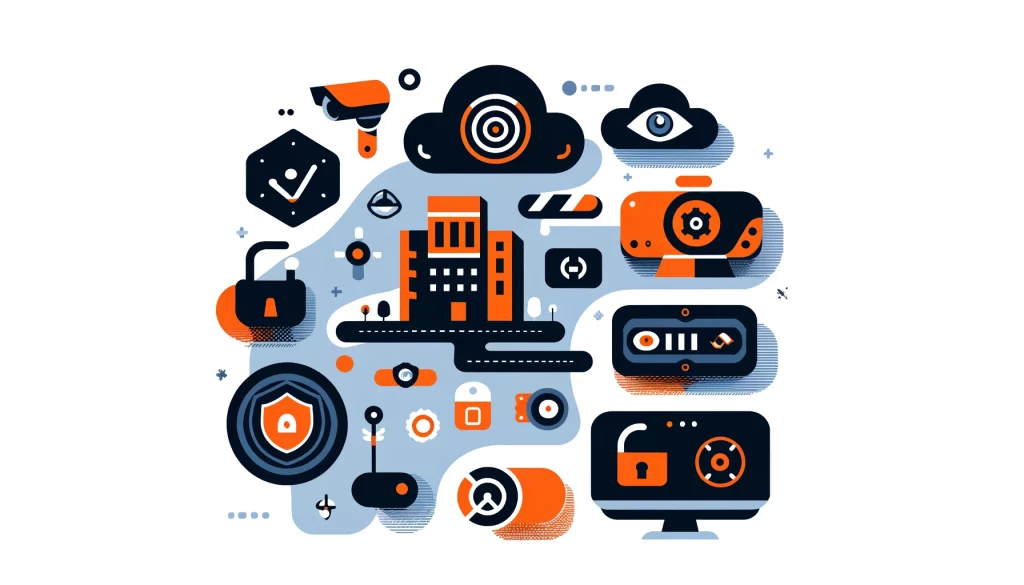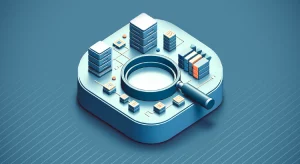
Exploring the Types of Security Controls for Data Protection

Introduction
In today’s digital landscape, data security is paramount for organizations of all sizes. With the increasing sophistication of cyber threats, it is crucial to implement robust security controls to protect sensitive information. In this article, we will discuss the different types of security control to protect data.
We’ll explore preventive, detective, and corrective security controls, and discuss their roles in ensuring confidentiality, integrity, and availability of data. By understanding these concepts, organizations can develop effective strategies to mitigate risks and maintain a strong security posture.
What are Security Controls?
Security controls are measures put in place to prevent, detect, and respond to security risks. You can apply them in various fields, including physical security and cybersecurity. Security controls in data protection aim to keep sensitive information safe from unauthorized access.
They also work to maintain the integrity of data. Additionally, they ensure that authorized users can access the information when needed. Security controls work by implementing barriers, monitoring systems, and response mechanisms to address potential threats.
Types of Security Control
You can categorize security controls into three main types based on their primary function:
Preventive Types of Security Control
Security controls prevent security incidents from occurring in the first place. They act as the first line of defense against potential threats. Examples of preventive security controls include:
- Access controls: Implementing strict access controls ensures that only authorized individuals can access sensitive data. You can achieve this by using strong authentication methods such as multi-factor authentication. You can also utilize role-based access control (RBAC). Additionally, following the least privilege principles is important.
- Firewalls: Firewalls monitor and control network traffic, blocking unauthorized access attempts and protecting against external threats. You can deploy them at the network perimeter or on individual endpoints.
- Encryption: Encrypting sensitive data renders it unreadable to unauthorized parties. Encryption keeps data private and makes it useless if someone tries to steal it without the right key to unlock it.
Detective Types of Security Control
Detective security controls focus on identifying security incidents or anomalies as they occur. They provide visibility into the organization’s security posture and enable timely response to potential threats. Examples of detective security controls include:
- Intrusion Detection Systems (IDS): IDS monitor network traffic and system activities for suspicious patterns or behaviors. They generate alerts when they detect potential security breaches, enabling security teams to investigate and take appropriate action.
- Security Information and Event Management (SIEM): SIEM solutions collect and analyze log data from various sources, such as servers, applications, and security devices. They correlate events and provide real-time visibility into security incidents, enabling proactive threat detection and response.
- Data Loss Prevention (DLP): DLP solutions monitor data in transit, at rest, and in use to detect and prevent unauthorized data exfiltration. They can identify sensitive data based on predefined policies and trigger alerts or block actions that violate those policies.
Corrective Types of Security Control
Security experts design corrective security controls to minimize the impact of security incidents and facilitate recovery. They activate after a security breach to restore normalcy as quickly as possible. Examples of corrective security controls include:
- Incident Response Plan: A well-defined incident response plan details the steps to take when a security incident occurs. It includes procedures for containment, eradication, recovery, and post-incident analysis. Having a clear plan in place ensures a swift and effective response to minimize damage.
- Backup and Recovery: Regular data backups provide a means to recover from data loss or corruption. Backups help organizations recover their data and resume operations quickly in case of a ransomware attack or system failure.
- Patch Management: Timely application of security patches and updates is crucial to address known vulnerabilities. Patch management processes ensure that systems and applications are up to date, reducing the risk of exploitation by attackers.
Combining Types of Security Control
While each type of security control serves a specific purpose, they are most effective when used in combination. Layered security, or defense-in-depth, means using many security measures at different levels for a strong security system. By combining preventive, detective, and corrective controls, organizations can establish a robust security posture that addresses various threat vectors.
For example, consider a scenario where an organization aims to protect sensitive customer data stored in a database. They can implement the following security controls:
- Preventive: Limit access to the database using access controls and secure data with encryption during storage and transmission.
- Detective: Database activity monitoring to detect suspicious queries or unusual access patterns, and SIEM to correlate database events with other security logs.
- Corrective: Make sure to regularly back up your database so you can quickly recover in case of data loss or corruption. Also, have a plan in place for how to respond in case of a security breach.
Using these controls together helps the organization reduce the risk of unauthorized access. It also allows them to quickly identify potential threats. Additionally, it enables them to recover from incidents efficiently.
Types of Security Control and the CIA Triad
The CIA triad—Confidentiality, Integrity, and Availability—is a fundamental concept in information security. Security controls play a vital role in upholding these three core principles:
- Confidentiality: Security controls ensure that sensitive information remains confidential and accessible only to authorized individuals. Access controls, encryption, and data loss prevention measures help maintain the confidentiality of data.
- Integrity: Security controls help maintain the integrity of data by preventing unauthorized modifications or tampering. Version control systems, digital signatures, and data validation techniques contribute to ensuring data integrity.
- Availability: Security controls aim to ensure that data and systems are available to authorized users when needed. To maintain availability during disruptions or attacks, organizations use measures such as redundancy, load balancing, and backup and recovery mechanisms.
Assessing and Implementing Security Controls
When selecting and implementing security controls for data protection, organizations should consider several factors:
- Ease of deployment: Choose solutions that are easy to implement and maintain. This will lessen the burden on security teams. Also, maximizing the benefits gained from the controls will help.
- Coverage: Ensure that the selected controls support the types of data stores and technologies used within the organization. To maintain flexibility, you should avoid tying solutions to specific vendors or infrastructures.
- Effectiveness: Evaluate the effectiveness of security controls in reducing the identified risks. Conduct internal assessments or seek external evaluations to validate their efficacy.
- Total Cost of Ownership (TCO): Consider the overall costs associated with the security controls, including infrastructure, training, and professional services required for effective implementation and maintenance.
Implementing security controls requires careful planning and collaboration among stakeholders. Including DevOps, security, and data engineering teams is crucial for a successful implementation process.
Begin with a modest trial initiative. Then, slowly increase the scale to include all important data. This will help reduce risks and avoid any potential disruptions.
Conclusion
In today’s data-driven world, implementing effective security controls is non-negotiable for organizations seeking to protect their valuable information assets. By understanding the different types of security control —preventive, detective, and corrective—and how they work together, organizations can develop a comprehensive security strategy. Combining these controls in a layered approach strengthens the overall security posture, ensuring confidentiality, integrity, and availability of data.
When you are choosing security measures, consider how easy they are to use. Additionally, consider their effectiveness. Finally, consider their cost. Careful planning and collaboration among stakeholders are essential for a successful implementation.
DataSunrise offers exceptional and flexible tools for data management, including security, audit rules, masking, and compliance. Their solutions provide organizations with the necessary controls to safeguard sensitive data and meet regulatory requirements. Request an online demo for more information.
Organizations can protect their important information by focusing on data security. They can also maintain customer trust and ensure business continuity. Using the right security controls to combat cyber threats is key in achieving these goals.
